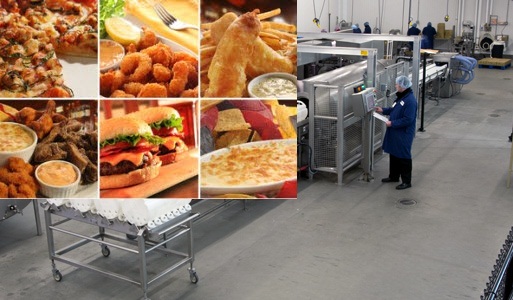The food industry is increasingly moving toward new product development and innovative propositions through new processing methods that allow foods with extended shelf life, high nutritional value and excellent organoleptic characteristics. One of such most successful developments made to date is High Pressure Processing (HPP). High Pressure Processing is a natural, environmentally friendly process that preserves the ingredient and helps maintain the fresh food characteristics like flavour and nutrients. It is a real alternative to traditional thermal and chemical treatments.
High Pressure Processing is a cold pasteurization technique which consists of subjecting food, to a high level of hydrostatic pressure up to 600 MPa / 87,000 psi for a few seconds to a few minutes. It is the same effect as subjecting the food to an ocean depth of 60 Km deep -if an ocean this deep existed.
Although the Non-Thermal Pasteurisation effect of high pressure on foods has been known since the 19th Century, it was not until the 1990´s that the first HPP products were developed. Since 2000, High Pressure Processing has been successfully implemented in all type of food industries worldwide. More than 80% of the HPP equipment have been installed after 2000, indicating an accelerated trend in HPP use. North America (U.S., Canada, and Mexico), Europe (Spain, Italy, Portugal, France, UK, and Germany), Australia, and Asia (Japan, China, and S. Korea) lead the commercialisation of high-pressure technology. The total production of pressure-treated food products is steadily growing. In 2010, it was estimated that 300,000 metric tons/yr of pressure-treated products were commercially available worldwide
Benefits of HPP Technology
· No heat is used
· In-pack, cold pasteurisation
· Inactivation of bacterial cells and enzymes
· Minimal destructive effects on nutrients
· Retention of natural flavour and colour
Equipment for High Pressure Processing: High-pressure processing systems were initially developed in the chemical and material process industries for applications such as making artificial diamonds and sintered materials from powders. It is only during the past two decades that the food industry has begun using pressure treatment for food preservation. HPP is primarily practiced as a batch process where pre-packaged food products are treated in a chamber surrounded by water or another pressure-transmitting fluid. Semi-continuous systems have been developed for pumpable foods where the product is compressed without a container and subsequently packaged “clean” or aseptically.
HPP Applications in Food Industry
High-pressure processing provides a unique opportunity for food processors to develop a new generation of value-added food products having superior quality to those produced conventionally. Strawberry, apple, and kiwi jams represented the first wave of pressure-treated commercial products introduced into the Japanese market in 1990. Avocado based products, especially guacamole, were subsequently commercialised in the United States. Fresher zed Foods (formerly Avomex) began the first industrial production of guacamole in North America in 1997. A decade later, by 2007, approximately 120 industrial HPP installations were in use worldwide for commercial scale food production.
The commercial use of high-pressure processing has been expanding. It provides food processors an opportunity to preserve foods with a “cleaner” ingredient label, and it is the process of choice for applications where heat pasteurization would adversely affect product quality. HPP allows products such as sliced meat to be pasteurized after slicing and packaging, thus mitigating the risk of contamination from the manufacturing environment. The U.S. Dept. of Agriculture, Food Safety and Inspection Service (USDAFSIS) recognizes high-pressure processing as an acceptable food safety intervention for eliminating Listeria monocytogenes in processed meat products. Pressure treatment is also effective in inactivating other hazardous microorganisms such as E. coli, Salmonella, and Vibrio, as well as many yeasts, molds, and bacteria responsible for food spoilage. The microbiological shelf life and quality of foods can be substantially extended by the use of HPP.
Pressure treatment can also be used to alter the functional and sensory properties of various food components, especially proteins, allowing these to be beneficially altered. Meat, fish, egg, and dairy proteins can be denatured with HPP in the absence of elevated temperatures. Increased viscosity and opacity are obtained with little change in fresh flavor. On the other hand, high pressure has very little effect on low-molecular-weight compounds such as flavor compounds, vitamins, and pigments compared to thermal processes. Accordingly, the quality of HPP pasteurized food is very similar to that of fresh food products. Subsequent distribution and storage temperatures and the barrier properties of the packaging rather than influence the quality throughout shelf life more by the pressure treatment.
